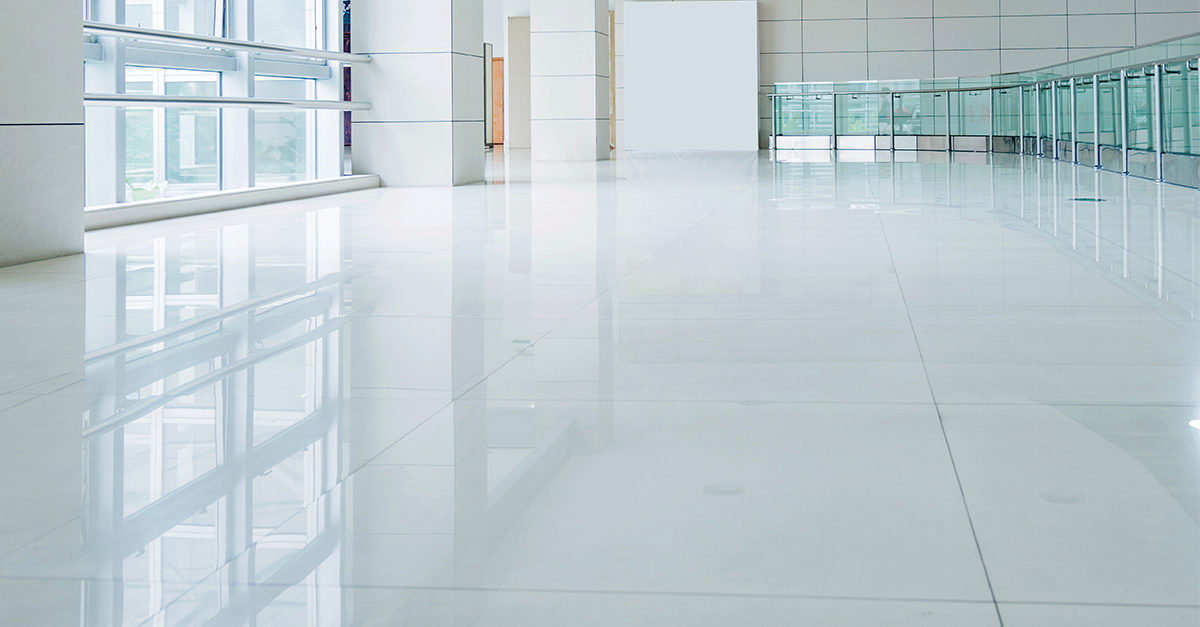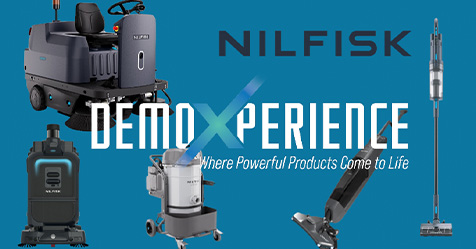There is a revolution going on in hard floor care that will have a major impact on how floors are both cleaned and restored in the future.
We are in the beginning phases of eliminating the need to strip, burnish, and refinish hard surface floors. For those of us who grew up on the handle of a floor machine with layers of wax on our boots, it’s hard to envision floor care without stripping and refinishing, but the handwriting is on the wall and will soon reach the floor.
The speed and depth of change is creating turbulence and uncertainty for manufacturers, business owners, and department managers as the cleaning industry transitions from the familiar ground of how things have been done in the past to the uncertainty of a future that is rapidly evolving.
Property and business owners, along with cleaning department managers, are unsure about how to proceed. Distributors are hesitant to promote new and untested products and processes, especially if they have the potential to cut into the profitable sale of exiting products and chemicals. Innovators face an uphill battle in getting exposure for their products via traditional distribution networks and industry media that rely on advertising revenue from established companies to stay afloat. Some of the new products on the market are so contrary to long-held beliefs and established procedures that they face skepticism from potential purchasers who question whether the promoted product is realistic or even possible.
Despite these concerns, changes are taking place, and as long as they are, cleaning professionals should be prepared. Here is what you need to know about floor care trends in 2015 and beyond.
Changes in Flooring
There are millions of square feet of vinyl composition tile (VCT) on the floor of buildings, and more is being installed, but this mainstay in commercial buildings is giving way to luxury vinyl tile (LVT), sheet goods, and other surfaces that require no finish or burnishing. In fact, much of the flooring that is installed today is coated during manufacture with mineral-based wear layers that do not require or prohibit on-site application of sacrificial topical finish.
Polished, stained, and densified concrete and terrazzo is showing up everywhere and can be easily maintained with diamond-impregnated floor pads. The use of natural wood, stone, and rubber materials is on the rise in both residential and commercial locations. The sustainability movement has brought us bamboo, sea grass, coir, jute, and hemp that are easily damaged by water and chemical-based cleaning processes.
Clay materials, such as porcelain and ceramic tile, are now commonplace in kitchens, bathrooms, halls, elevators, and lobbies. Even clay tile is changing; nearly 90 percent of the clay tile produced today has its color and pattern applied with ink-jet printing technology. Where there used to be a mineral glaze on the surface, we now find a urethane or aluminum-oxide coating. At first glance one might say, “So what?” But the reality is that a urethane coating will not wear and resist scratching like a heat-bonded glaze that actually becomes part of the tile.
These trends are expected to continue in the future, and over time, they will become the norm instead of the exception. As these new surfaces become commonplace, the processes and products we use to clean, maintain, and restore them must keep pace. Otherwise, cost will needlessly increase and the useful life of the surface will be reduced.
No More Floor Finish
The use of floor finish is decreasing. We are slowly moving away from the use of stripper, floor finish, and burnishing processes that are hazardous, time and energy consuming, and use large amounts of water that ends up in the waste stream via the drain.
Self-cleaning surfaces, diamond polishing, nano-coatings, stain guards, impregnators and cleaners, and prevention will replace the use of topical finish in commercial locations. Expect to see reductions in stripping and the use of floor finish as better products and processes eliminate the need for either one.
Sustainable Chemicals and Processes
Green floor care is in. Using green products used to cost extra, and many didn’t—and still don’t—see the need for them. However, they are now becoming commonplace and expected—if not demanded—in many market segments, such as education, health care, and government, in areas of the United States. We are learning that cleaning in a sustainable manner is cost-effective, and there are often hidden financial benefits that only become visible as green cleaning programs are implemented.
Floor Care Equipment
Floor machines, vacuums, and auto scrubbers are going digital and will soon link wirelessly to the Internet. You’ll never have to ask again, “Where is my floor machine?” With a quick check on your phone, you will know where to find it, even if it’s in the back of a truck going down the freeway in another state.
Equipment is becoming easier to operate and repair, often relying on electronic systems that are energy efficient and use sustainably-engineered water instead of chemicals for cleaning.
Robotic equipment, although off to a slow start, is picking up speed as wages increase and costs come down. As ease-of-use increases, robotics will become irresistible to management. There is no way around it in larger facilities. It’s only a matter of time and money.
It won’t be the robot alone that drives the change; it will be the package of services, benefits, and cost savings robotics provide that will bring this technology to the forefront of the cleaning industry. During the next 10 years, you will see more use of riding equipment, and in the following five years, it will become fully automated.
Besides robotics, other enhancements we can expect to see in floor care equipment and technology include the use of less water and engineered water, little or no detergents and strippers, and square or rectangular machines that clean right up to the baseboard and into corners. These machines will speed up the process by roughly 20 percent, eliminating much of the handwork that cleaning the edges of a room used to require.
Validating Floor Care Results
In the past, if the floor shined and no soil or buildup was visible, you were good to go. Today, management and our customers want proof that the cleaning we provide actually obtains the desired results.
To meet these demands, we are seeing a migration of scientific testing equipment and processes into the cleaning industry and the facilities we clean. It is becoming more common to see specifications that require testing and validation of cleaning processes related to coefficient of friction, gloss levels, and film thickness. Beyond this, you will find hand-held adenosine triphosphate (ATP) meters, particle counters, and other test equipment showing up in all types and sizes of facilities.
Test equipment will bring higher expectations regarding slip, trip, and fall prevention, the elimination of harsh and toxic chemicals, and more attention paid to contamination on surfaces and becoming airborne during cleaning. This is only the beginning; you can expect testing and validation of cleaning processes to become commonplace in the future.
Looking Further Ahead
Self-cleaning surfaces already exist, but haven’t reached our industry yet; however, it won’t be long before we begin to feel the impact of this technology.
During the next 10 to 30 years, technology will reach a tipping point where the speed and impact of change will exceed our imagination. As new floor care technology becomes smaller, more powerful, and less expensive, it will become more available and reach further in its ability to displace long-held beliefs, processes, and products.
Part of your job and personal responsibility is to stay current with the changes taking place in the cleaning industry as well as the trends that are impacting your customers. You can’t know it all, but you need to know how to find essential information when you need it. These are challenging as well as great times of opportunity for those who constantly strive to improve themselves and the work they do.
William Griffin is the president of Cleaning Consultant Services, Inc., and author of How to Sell and Price Contract Cleaning. He is an industry consultant and trainer with more than 35 years of experience. Contact him at[email protected] or visit www.cleaningconsultants.com.
Flooring Production Rates and Costs
Production rates are increasing and costs per square foot are decreasing slightly for several reasons:
- More productive equipment and pads
- Less frequent scheduling of time-consuming tasks
- Focusing on prevention versus cleaning and restoration
- Targeting services and frequencies to high-traffic areas versus scheduling service that is based on the type of flooring
- Wider use of flooring that does not require stripping, burnishing, or refinishing.



